





Voles
How to Trap a Vole
Use live trapping and relocation to prevent pesky voles from destroying your lawn and trees. Havahart® offers easy-to-follow instructions to help you get the job done.
1 Choose a Vole Trap
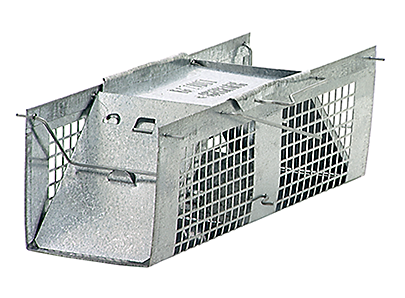
Voles are tiny, lightweight creatures, so the best traps for catching voles are compact, with sensitive triggers.
The best live vole traps are:
- Extra Small: Rodent-sized traps have sensitive triggers that target lightweight animals and small holes through which voles cannot escape.
- Economical and Reusable: A material like galvanized steel is low-cost yet durable enough to withstand wildlife and the elements, allowing you to reuse it several times.
TIP: Live traps with 2-doors give you a higher catch rate because they allow voles to enter from either end.
Shop Traps »
2 Determine Trap Placement
Traps should be placed directly in line with surface runways (learn how to identify these). Voles are predictable and typically only travel along established runways within their small range, so placing your traps here will give you the greatest chance of catching them.
TIP: It's important that your trap remains level - be sure to place it on even ground. If possible, secure your trap to the ground using wire stakes.
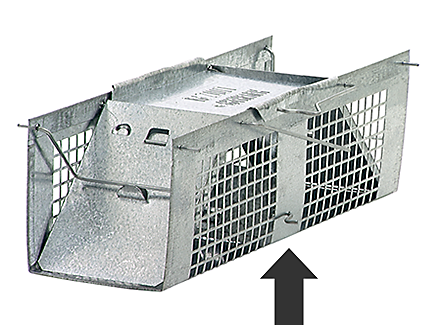
3 Add Bait
Positioning your trap directly along a vole's frequented runway should lead to results without the need for bait. However, if you wish to add extra incentive, consider the following tips:
- Use a sticky, spreadable bait like peanut butter to ensure it will not move or get stolen.
- In a 2-door trap, place a small amount of bait directly onto the trigger plate to encourage a vole to step on and activate it.
- Give voles a taste of what's inside by adding a small amount of bait before the trap entrances.
For more expert bating tips, read How To: Vole Baits »
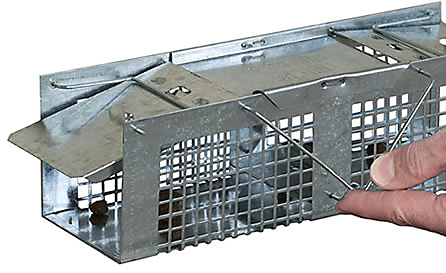
4 Set Your Trap
Voles cannot survive very long without access to food and they can become anxious, overheated and vunerable to preadators. Check your trap often - a vole should never be trapped for a long period of time.

5 Check the Trap Frequently
It's important to make sure an animal isn't trapped in your cage for extended periods of time. Animals often panic when they are confined in small spaces and can become stressed. If possible, check your trap once an hour (from a distance is fine) to see if you've trapped a vole or any other pest.
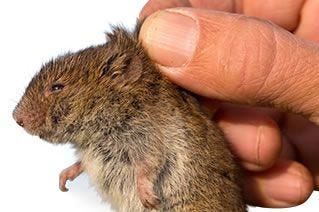
6 You've Caught a Vole!
- Wear gloves whenever handling a wild animal to avoid contact.
- If local laws permits, relocate your vole to a similar habitat that's at least 5 miles from your property.
- If you believe the rest of the colony remains on your property, reset the trap in the same position after you've released the animal.
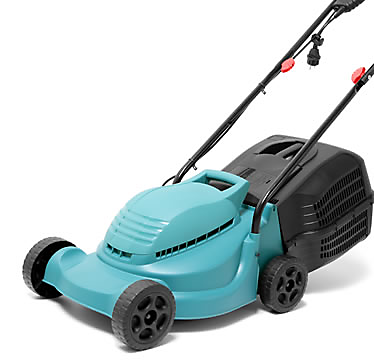
7 Reduce Food and Cover
Voles are attracted to areas with abundant cover and food potions. By maintaining the cleanliness of your yard and reducing the amount of thick vegetation, you can begin to keep voels from returning to your property. Some steps you can take include:
- regularly mowing your lawn
- pulling weeds
- tilling soil
- removing falled birdseed, berries and nuts
- cleaning up brush and debris that may provide cover
